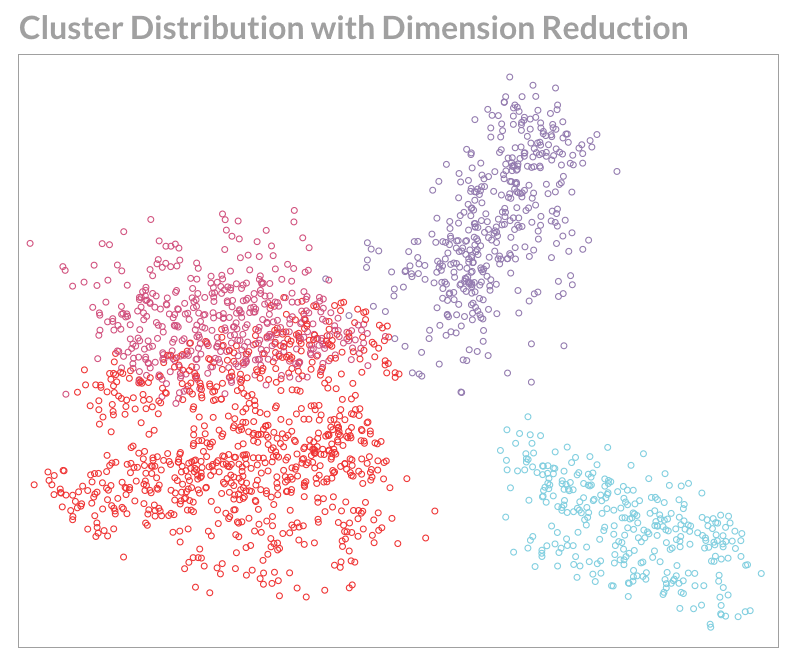Machine Learning Examples in Higher Education
We are currently witnessing how technology changes the world and education in particular. Big Data and Machine Learning have always on everyone's radar due to its unexpected still paramount influence on our daily lives.
We certainly remember all the retail, social media, those Tinder ground-breaking cases and other ways to use Big Data, but how has it changed things as fundamental as, say, education?
According to Knewton, there are five types of data in the education sector:
- personal data
- e-learning (digital workbooks, online courses) student engagement data
- learning material effectiveness data
- administrative data
- forecasting data
Let's find out how each sort of data contributes to shaping and improving contemporary education.
Personalized Education
Globally, the objective of Machine Learning is to enhance the processes and education industry is not an exception for that matter. Educational Data Mining is seen as the most powerful instrument to increase the effectiveness of education as it is today.
| #1 Ranking: Read how InetSoft was rated #1 for user adoption in G2's user survey-based index | Read More |
Rethink the Data Analysis Methods
The following is being achieved through designing those data analysis methods which will enable us to rethink the approach, fill in the gaps and adapt the accumulated experience in order to transform the system.
This data exchange and processing framework enable teachers to predict student's behavior and adapt the material up to his needs. Technology also increases the rapidness of feedback from both sides, instead of waiting for the standardized tests to identify the weak spots. Administrators are able to evaluate the effectiveness of the entire course on the go and use statistics to craft the curriculum and give further recommendations to the students. Moreover, they can create perfect matches between mentors and students basing on psychometric data, which also gives a head boost to the education effectiveness.
Online Learning
It makes no sense to deny that e-learning is in full swing now. Multiple platforms like SkillSoft, Coursera or SkillShare provide educational materials to millions of users. It is nothing that Big Data analysis which has allowed these resources to deliver high quality individualized content which drives customer engagement, retention, and overall e-learning industry growth. Based on processed inputs, system may also adapt one's learning path - either fast-forward or focus on revision, depending on the student's actual performance.
Machine Learning vs. Plagiarism
World Wide Web is an infinite source of information and a great asset for that cluster of people who always tend to not having enough time, effort or desire to submit originally written papers. Plagiarism was always a reasonable issue in the academic world especially when it comes to education. An anti-plagiarism tool, which is a combination of extremely thorough data analysis and machine learning, became a real game-changer in the sphere of evaluation and verification of students' work. Many students also turn to a paraphrase tool to rewrite content and avoid plagiarism while maintaining originality. It has also given birth to the new generation of business which capitalizes on helping the pupils who struggle to create original writings. A quality anti-plagiarism tool is something that gives teachers a way to deal with this.
 |
View a 2-minute demonstration of InetSoft's easy, agile, and robust BI software. |
Tackling Dropout Issues
America is steadily presenting disappointing college dropout results. Last year, only 56.9% of those who enrolled in 2011 had managed to obtain a diploma on the pursued track. Not only it is a problem for the students who have taken on a college loan but also for the institutions. The higher student outflow a college or university experiences, the lower income and financial support from the state it eventually receives. Moreover, successful student progress through the educational track directly impacts a college position in the national rankings.
It turns out that colleges have started to utilize Machine Learning in education to combat the high dropout rates a long time ago. Aggregated data allows to track the record of students' individual real-time performance, eventually identifying or predicting problematic areas, using the historical databases. Such students are offered with personalized support (e.g., tutoring) to fill the gaps. As a result, a portion of students who manage to pass the course and proceed to the next year began to grow slightly.
Another approach colleges began to run across recently is to prevent the dropouts at the very recruitment stage. Average US admission campaign used to have an outreach of more than 250,000 names per institution annually. Adopting Machine Learning has allowed colleges to shift from the traditional demographic method of buying prospective names to actually targeting the students they want the most.
Potential students' footprints across social media, digital resources, and educational surveys are collected into a data set. Likewise, colleges are profiling their recent successful graduates. Two sets of inputs are matched with intent for seeking the overlaps - best fitting students. This method does hit the spot in fact - not only colleges reduce the dropout rate, grow performance and rank higher but save loads of money by personalizing their admission outreach.


